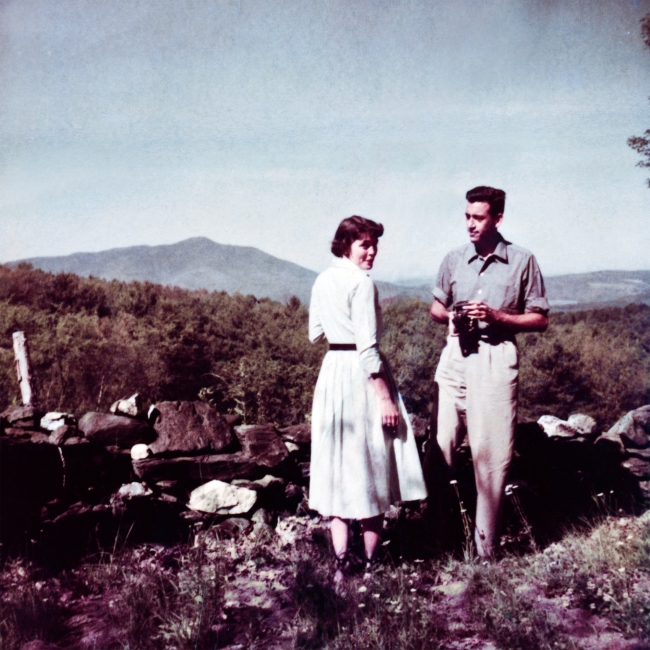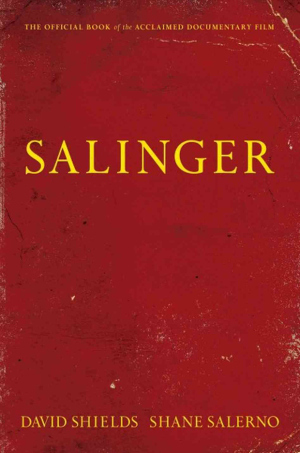When news emerged three years ago that filmmaker Shane Salerno and writer David Shields were working on a lengthy oral biography (with accompanying documentary) about J.D. Salinger, I assumed it would be all smoke and no fire.
Salinger, after all, had gone to ground after the publication of his novella “Hapworth 16, 1924” in the June 19, 1965, issue of the New Yorker; even in the wake of his death, in January 2010 at age 91, his estate had preserved the silence of his final 45 years.
What had he been doing for all that time at his hilltop retreat in Cornish, New Hampshire Writing, certainly: Witnesses, including former lover Joyce Maynard and his daughter, Margaret, who published back-to-back memoirs in 1998 and 2000, had already told us that. But what, exactly, had he written? And how had he persevered?
Salinger, after all, had gone to ground after the publication of his novella “Hapworth 16, 1924” in the June 19, 1965, issue of the New Yorker; even in the wake of his death, in January 2010 at age 91, his estate had preserved the silence of his final 45 years.
What had he been doing for all that time at his hilltop retreat in Cornish, New Hampshire Writing, certainly: Witnesses, including former lover Joyce Maynard and his daughter, Margaret, who published back-to-back memoirs in 1998 and 2000, had already told us that. But what, exactly, had he written? And how had he persevered?


The latter question is perhaps more essential in regard to Salinger than any other 20th-century American writer, for in his four slim books ― “The Catcher in the Rye,” “Nine Stories,” “Franny and Zooey” and “Raise High the Roof Beam, Carpenters and Seymour: An Introduction” ― he sought to offer instructions for living, producing fewer stories per se than parables, or koans.
When Franny Glass, the youngest sibling in his fictional family of saints and martyrs, declares, “I used to hate myself so, when I was in a play, to be backstage after the play was over. All those egos running around feeling terribly charitable and warm,” she is speaking for Salinger, without question. But she is also sending a message he wants the rest of us to hear.
Salerno and Shields’ book “Salinger,” it turns out, is an exploration of those messages, which Salinger seeded throughout his life and work. At nearly 700 pages, it’s a bit of a shaggy monster, yet what may be most astonishing about it is its (largely) even tone.
The idea is to present a portrait of Salinger as both his own savior and something considerably darker; among its most troubling revelations is that Salinger pursued and even (in some cases) seduced teenage women; Maynard, who was 18 when he wooed her, was neither the first nor the last.
The book has already been in the news for uncovering, in the closing pages, plans to publish five new volumes of Salinger’s writing, beginning in 2015. It’s a mark of Salerno and Shields’ achievement, however, that this seems in the end beside the point. Of course, if there were work, it would emerge eventually, although I fear that may be a mixed blessing at best.
Don’t get me wrong: I’d read a laundry list if Salinger had a hand in it, but in the last years before his retreat, his writing began to grow increasingly insular, as if, the authors suggest here, he were writing for an audience of one. “Hapworth” is, to be frank, a disaster, a 20,000-plus-word letter narrated by Seymour Glass, then 7, who famously kills himself at the end of the 1948 story “A Perfect Day for Banana-fish.” Stilted, pedantic, it is, Shields observes, “dead on arrival ― deliberately, angrily, fascinatingly so.”
The question is why ― why Salinger set out to embrace anger and renunciation (or, perhaps, the Joycean trinity of “silence, exile and cunning”) and what this tells us about him not only as a writer but also as a human being.
“Salinger” argues that it begins and ends with World War II.
This is not a new theory; it was explored in Kenneth Slawenski’s disappointing 2011 biography “J.D. Salinger: A Life,” which relies more on conjecture than reporting to make its case. But Salerno and Shields get the goods, digging up information on Salinger’s war buddies, including Paul Fitzgerald, with whom he maintained a lifelong friendship and correspondence, and tracing the shattering sequence of his service on the battlefield, which began with D-Day and ended nine months later with the liberation of the concentration camp Kaufering IV.
“You can never really get the smell of burning flesh out of your nose entirely, no matter how long you live,” Salinger once told his daughter Margaret. In Europe, in summer 1945, he had a breakdown, and returned home with what we now would identify as post-traumatic stress disorder.
“He put his arms on the table and rested his head upon them,” Salinger writes in “For Esme ― With Love and Squalor,” a rare fictional evocation of his war experience. “He ached from head to foot, all zones of pain seemingly interdependent. He was rather like a Christmas tree whose lights, wired in series, must all go out if even one bulb is defective.”
Considered through such a filter, Salinger’s life becomes a saga defined by its own trauma and the books a series of small miracles that, by all rights maybe, never should have existed at all. It’s a point Salerno and Shields make explicit late in their own book, suggesting that “the wounds made him; for nearly a decade, he transformed the wounds into agony-fueled art, and then ― because he could not abide his own body, himself, his own war-ruined mind, the attention, the criticism, the love ― he came to revile the world.”
At the same time, they argue, this was a double-edged process, in which he did an odd dance with his solitude, offering occasional interviews (most tellingly a 1974 conversation with the New York Times’ Lacey Fosburgh) and even appearing in court in 1986 to give a deposition in his lawsuit against biographer Ian Hamilton.
“There’s a part of him,” observes Salinger scholar John Wenke, “that enjoys the power game that went on when the Ian Hamilton biography was making its way through the courts. ... An actual recluse or mystic wouldn’t care.”
Wenke’s right, which is why Salinger continues to fascinate us, half a century after his last published words. “Salinger” is at its best in tracing these contradictions ― the litigious tender of his public image and the man whose last words were, reportedly, “I am in this world but not of it” ― and in using them to humanize the author by revealing the depths of his flaws.
As for what’s missing, I wish Salerno and Shields had given more information about who is speaking: Each chapter is a litany of names without attribution, leaving us unsure from whom we’re hearing and why. There is also an unfortunate tendency to mix interview material with passages from published works, without distinguishing between them on the page. Interpretive chapters on “The Catcher in the Rye” and “Nine Stories,” as well as one on the role of “Catcher” in the crimes of Mark David Chapman, John Hinckley Jr. and Robert Bardo, fall flat.
And yet I think this is as it should be, for if “Salinger” has anything to tell us, it’s that its subject was just a man. He lived, he saw some horrible things and spent the rest of his years trying to crawl out from under them, and then eventually he died. It’s the most common story in the world, and it strips away the sheen of his exceptionalism, trading in his genius for something much more real.
“Desperate for cures,” Salerno and Shields write, “he destroyed himself: withdrawal, silence, inward collapse. The wounds undid him, and he went under.”
By David L. Ulin
(Los Angeles Times)
(MCT Information Services)


![[KH Explains] Will 6-day workweek for executives help Samsung avert crisis?](http://res.heraldm.com/phpwas/restmb_idxmake.php?idx=644&simg=/content/image/2024/04/21/20240421050096_0.jpg&u=20240421164408)


![[AtoZ into Korean mind] Humor in Korea: Navigating the line between what's funny and not](http://res.heraldm.com/phpwas/restmb_idxmake.php?idx=644&simg=/content/image/2024/04/22/20240422050642_0.jpg&u=)











![[Herald Review] Xdinary Heroes kicks off five-month-long project with solo concert, teases new album](http://res.heraldm.com/phpwas/restmb_idxmake.php?idx=652&simg=/content/image/2024/04/22/20240422050539_0.jpg&u=20240422152154)
![[Today’s K-pop] Illit logs 100m Spotify streams with debut song](http://res.heraldm.com/phpwas/restmb_idxmake.php?idx=642&simg=/content/image/2024/04/22/20240422050650_0.jpg&u=)